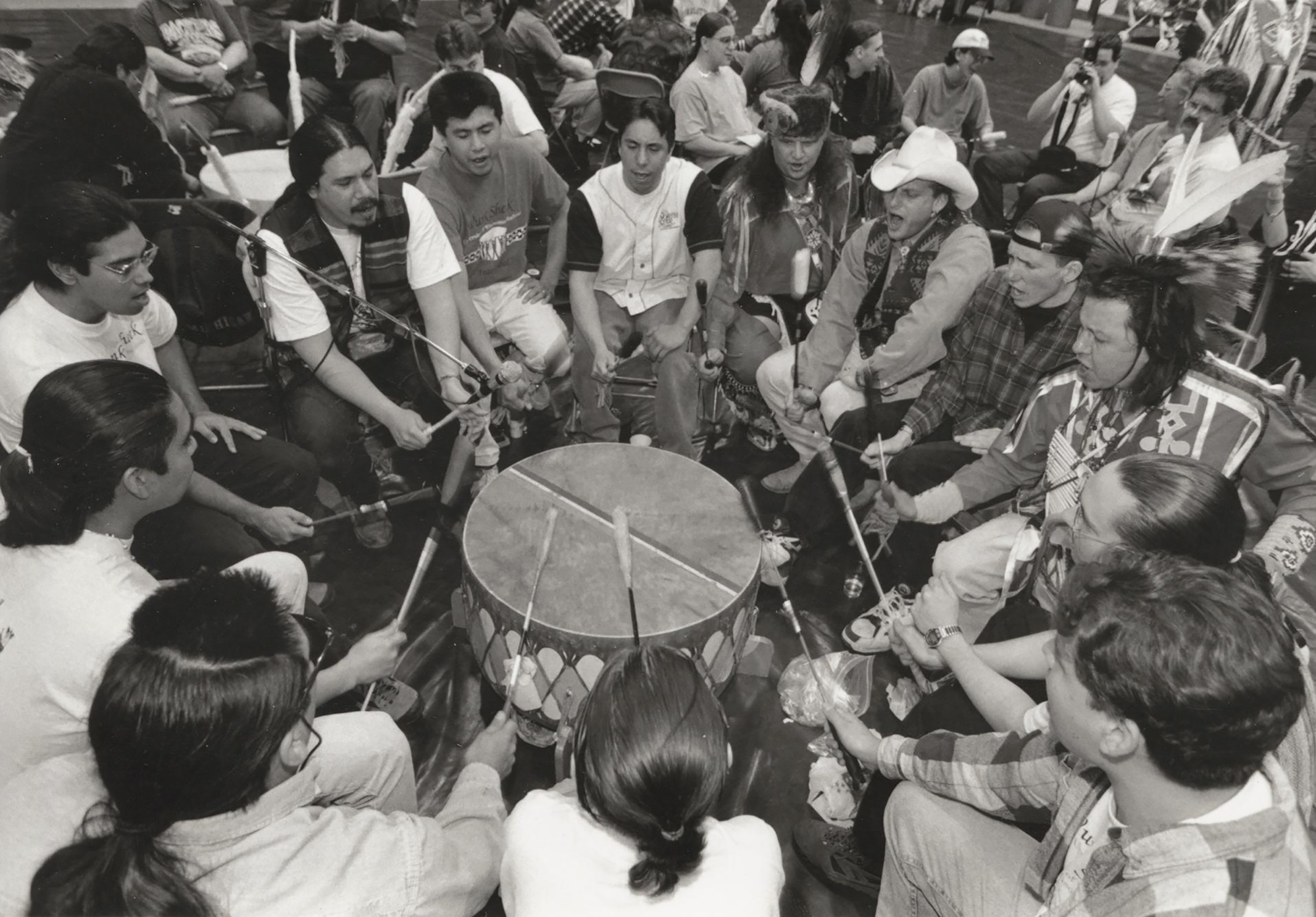The Story of American Indian Studies at UW-Madison
In the autumn of 1970, a group of about twenty Native students came together to grow their community at the University of Wisconsin-Madison. Calling themselves “The Coalition of Native Tribes for Red Power” (CNTRP), this intertribal group of Native undergraduates delivered a document to University Chancellor Edwin Young. In so doing, these Native students at UW-Madison joined hundreds of other Native students across the country in a chorus calling for the creation of American Indian Studies on campuses far and wide.
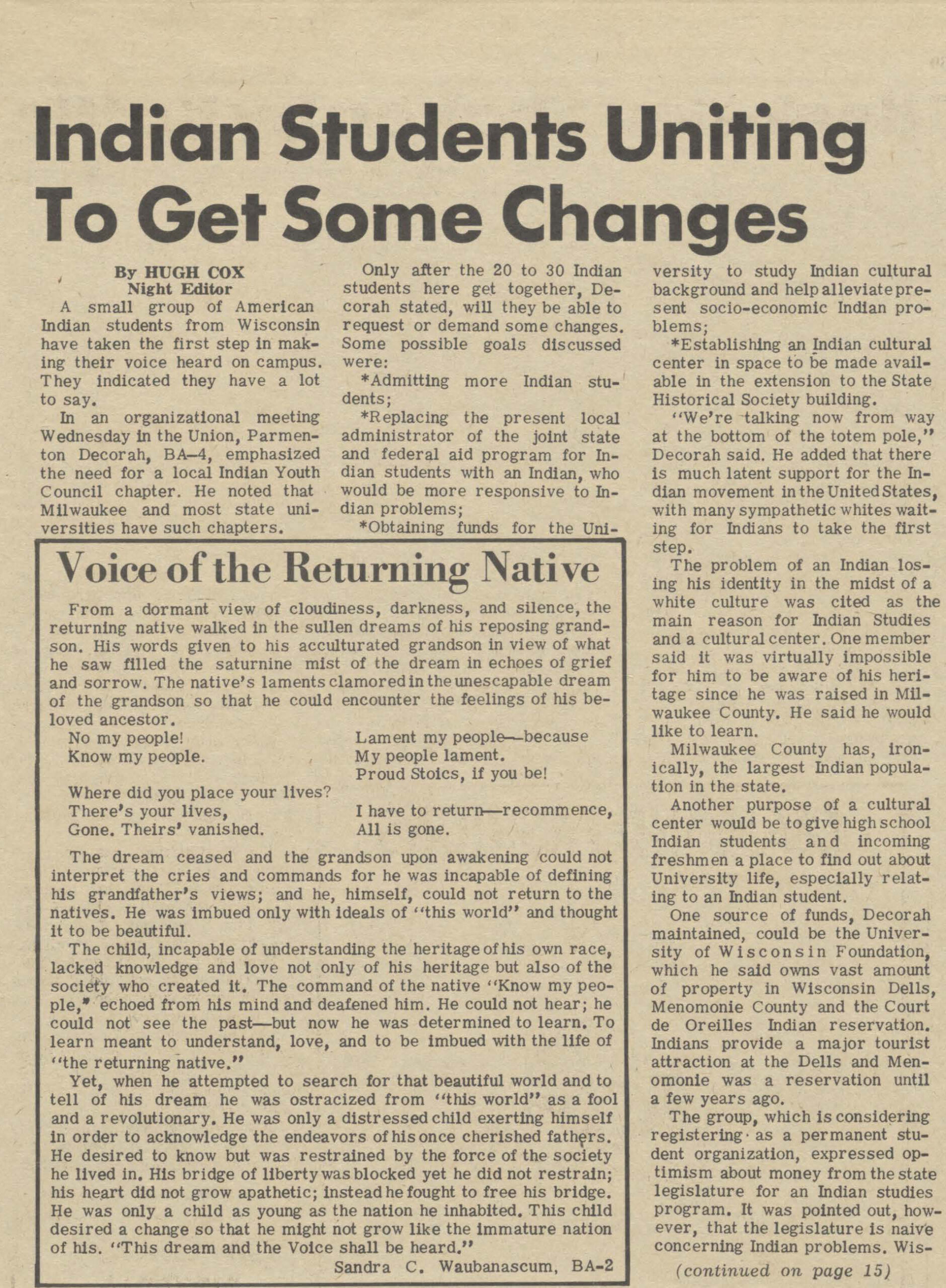
In Madison, these Native students began to hold campus events, give interviews to various newspapers, and address university officials in meetings. “A small group of American Indian students from Wisconsin have taken the first step in making their voice heard on campus,” reported The Daily Cardinal, “They indicated they have a lot to say.” Wisconsin senior Parmenton Decorah was optimistic that Native students could achieve change on campus –but only if they could organize themselves. Decorah announced a goal to gather the “20 to 30 Indian students” under the banner of red power to build momentum for their campaign. Should read: Wisconsin senior Parmenton Decorah was optimistic that Native students could achieve change on campus, but only if they could organize themselves. Decorah announced a goal to gather the “20 to 30 Indian students” under the banner of Red Power to build momentum for their campaign.
In Their Words with Ada Deer
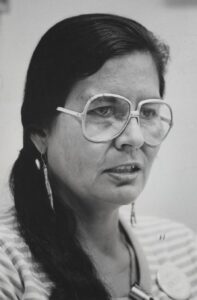 Ada Deer (Menominee): Student, AIS Faculty Member, AIS
Ada Deer (Menominee): Student, AIS Faculty Member, AIS
“In speaking about her efforts to grow the AIS Program as the Program Director, Ada Deer recalls trying to secure additional funding and the pushback she received, “I told him we are a very small program and we needed some more money to develop the program. I didn’t know what you have to do to bring that about. But he told me that I couldn’t do anything [about it] unless I brought in a $100,000 to begin with. And I thought, what? Well, I said I can’t do that. You know, I didn’t want to spend my time making money and I know the University was big and there were opportunities for somebody, somewhere to provide money. But, you know, it didn’t work at that time. And so we just kind of jogged along. Yeah, jogged along.”
After two years of discussions, debate, and outreach, the Coalition Native Tribes for Red Power (CNTRP) had distilled their aspirations on campus into four issues, which are outlined below. “We, the Coalition of Native Tribes for Red Power, on this day…present to the University of Wisconsin these challenges,” their manifesto began. They called for the university to employ at least four Native Americans to work with students on campus, to increase the enrollment of Native students on campus through active recruitment, to devote more resources to their success, and that a language requirement for Native students be altered so that any Native student who speaks their language be accepted as a first language and English be accepted as a foreign language requirement. To up at ante, the students also announced a “RED POWER Pow-Wow” to ensure that all eyes would be on the university’s response.
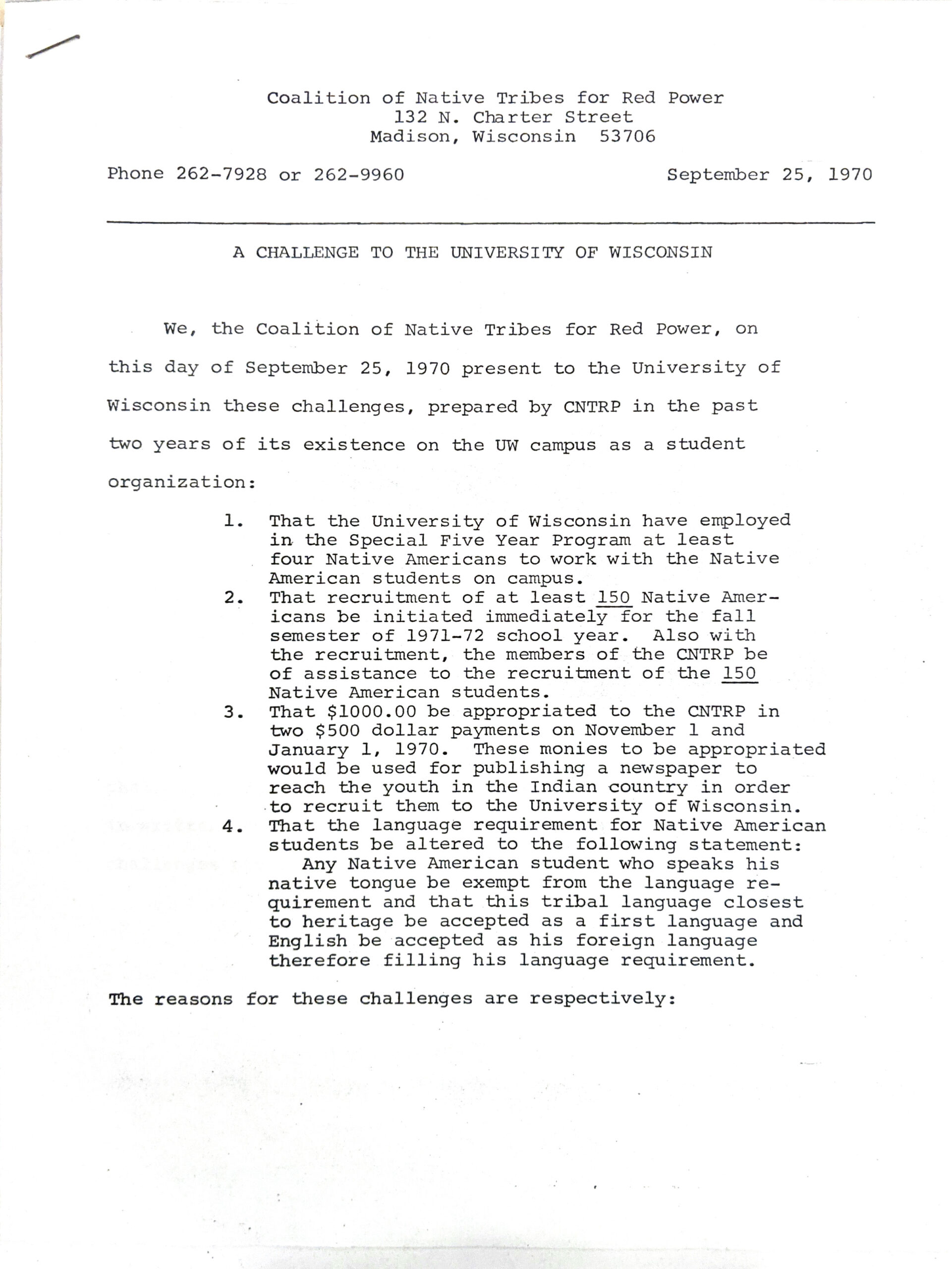
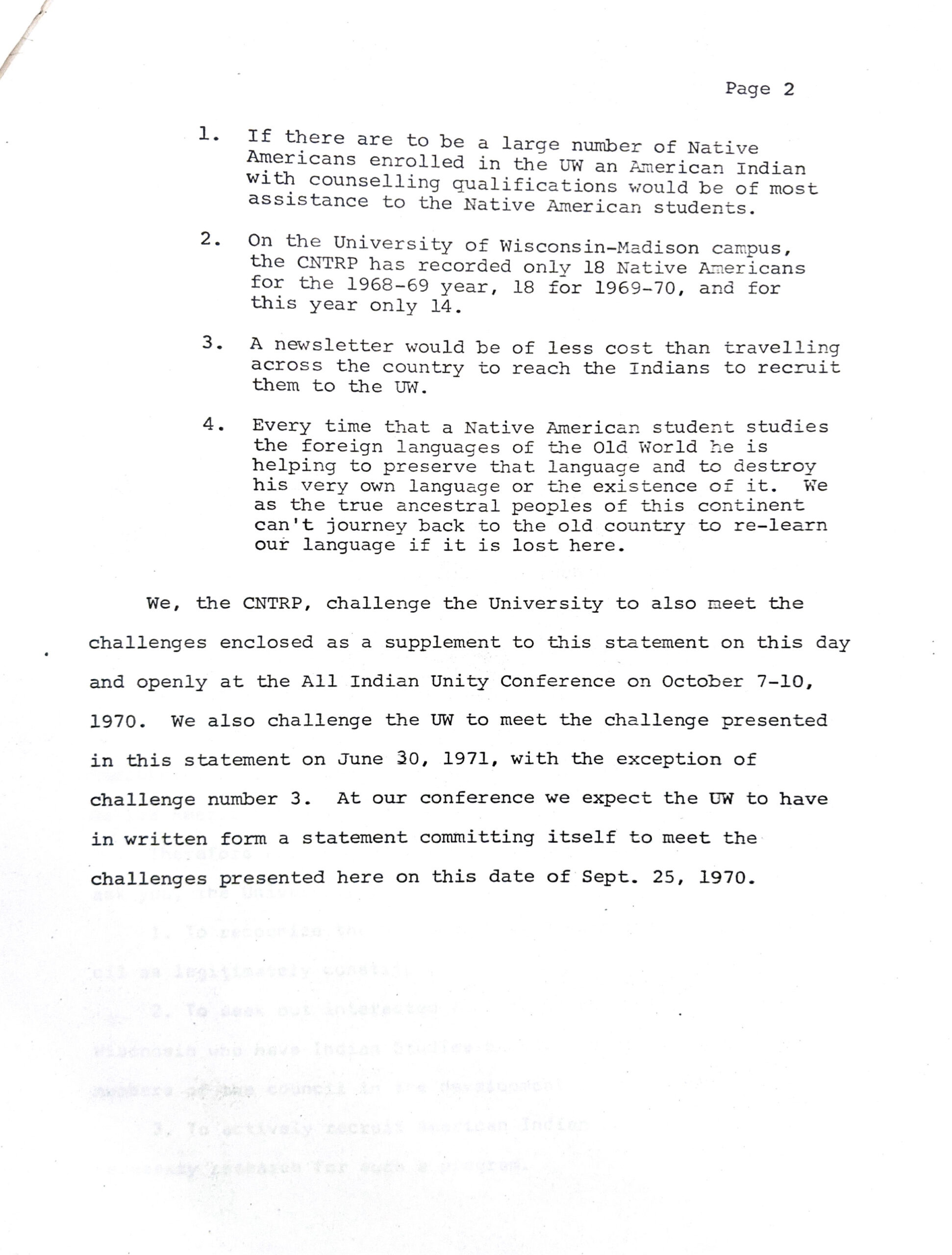
The document contains four items which Native students felt was crucial to their success on campus.
On October 9th, Vice Chancellor F. Chandler Young delivered a statement on behalf of the university in response to the CNTRP’s four challenges. Young revealed that the chancellor’s office had decided to explore the creation of a Native studies program. “We are presently surveying our faculty and staff to find qualified people who would be willing to participate in this enterprise,” Young told the students. The news spread. Under the headline “More Indians to Be Sought by University,” the Wisconsin State Journal reported, “The University of Wisconsin will increase its efforts to enroll more Wisconsin Indian students and is looking for faculty members who can teach courses dealing with American Indian studies.” This set off a year-long negotiation between Native students, faculty, administrators at the University of Wisconsin-Madison.
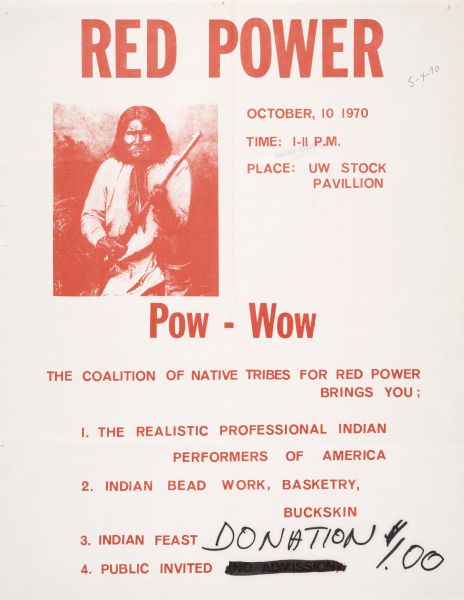
The university’s bureaucracy began to stir. Chancellor Edwin Young directed the formation of an Ad-Hoc Committee on Native American Programs. Young explained to candidates for this committee that the CNTRP “composed of American Indian students, is interested in securing a great commitment from the University to recruit and provide scholarship assistance for American Indian students and to offer more courses dealing with Native American studies.” Young then charged this group with a mission: “The committee will have to make specific recommendations as to what role, if any, the Madison campus should take in providing greater educational opportunities for Wisconsin and American Indians.”
In Their Words with Janice Rice
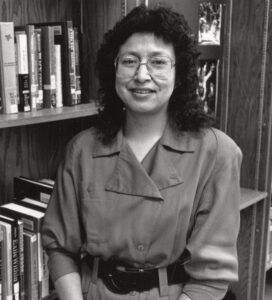 Janice Rice (Ho-Chunk): Student, UW Faculty Member
Janice Rice (Ho-Chunk): Student, UW Faculty Member
During the early 1970s, Janice was a young, Native woman at UW, actively participating in the creation of Native spaces on campus, often through activism. Janice, who received her Master’s degree in Library Science from UW in 1975, became a pillar of the Native community at UW and in Madison.
As a graduate student and member of Wunk Sheek in the mid to late-1970s, Janice Rice remembers the lack of graduate level classes in American Indian Studies, an issue that remains today. “There really weren’t any classes. So this is in 1974 and ’75, and then coming back again, in ’77 to ’79 there were no [American Indian Studies] classes. And if there were, they might have been the introductory level, which would not fit my grad level course load. So there was nothing at the grad level I could take…So if you look at my grad degree, and each of the degree areas, there were no [American Indian Studies] courses, and some places there still aren’t [any American Indian Studies classes]…There weren’t courses back when I was in school…Make your own and be an advocate.”
But there was a problem. On December 2nd, Merritt J. Norvell, Jr. Assistant to the Chancellor, wrote of a meeting he had with the Native students. “I am concerned as are the CNTRP members that there is a notable absence of Native Americans on the committee,” Norvell reported. “In addition, there are no student participants. This will generate credibility questions immediately,” Norvell explained. Evidently, the Native students had expressed an urgent need to sit on the university’s committee. “It became apparent that once again we are developing programs in directions which we perceive as being best for them, without providing them with an opportunity to have legitimate input,” Norvell cautioned. “Things are done for them, to them, about them, but never by them.”
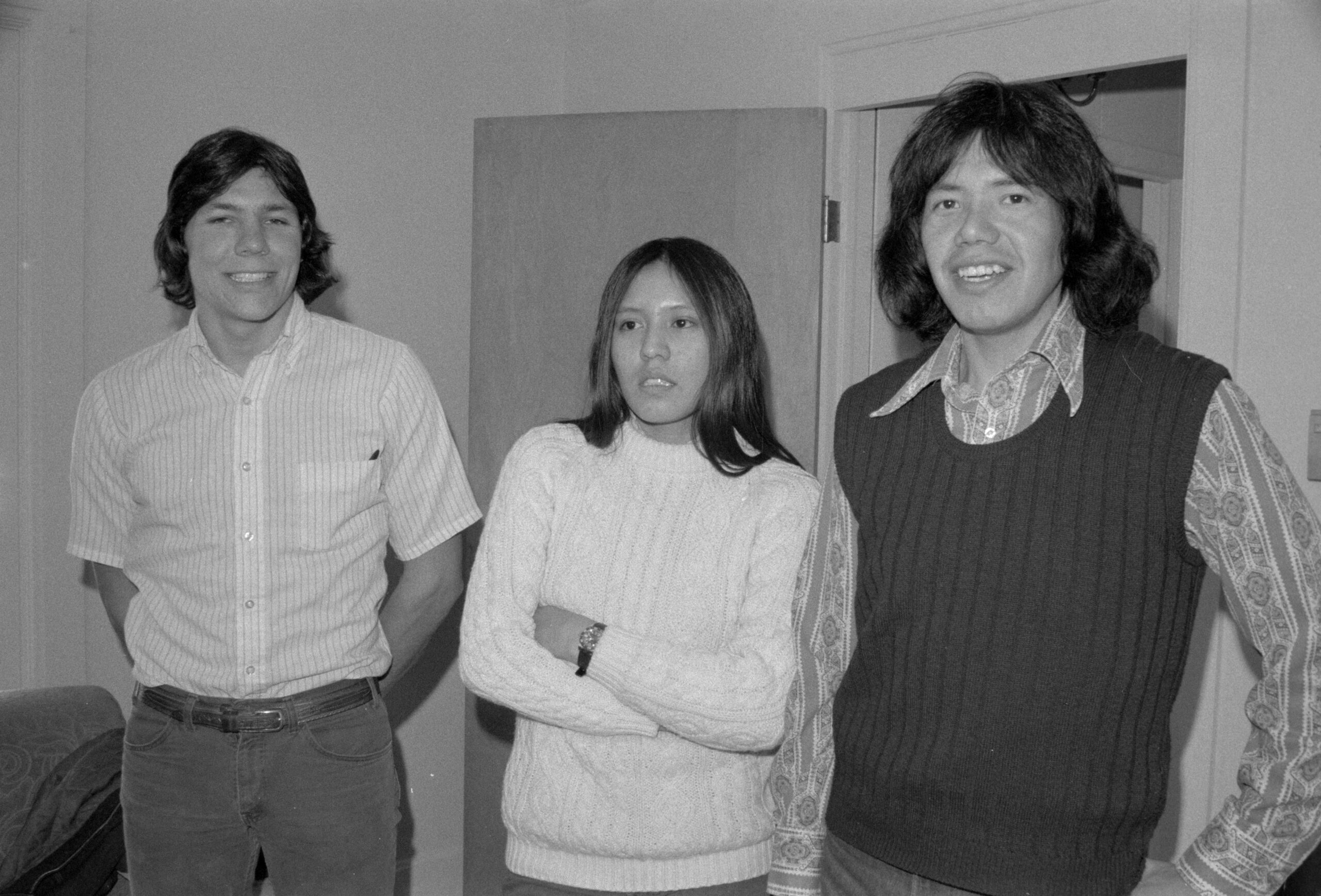
ca. 1972
Norvell’s warning seemed to have broken through. Soon after, Chancellor Young wrote to CNTRP leader Sandra Waubanascum to appraise her on his progress towards satisfying the group’s demands. Young asked Waubanascum to solicit two students who would serve on the committee “in order to insure [sic] that the committee has effective student input.” He asked her, on behalf the CNTRP, to produce these names. “I would appreciate receiving the names as soon as possible so that the committee may begin its important work.” Eventually, Roberta Hill, John Neimisto, and Sandra Waubanascum all joined the committee. Meanwhile, Lehman Brightman and Ada Deer became informal advisors. With Native people finally attached, the committee got to work.
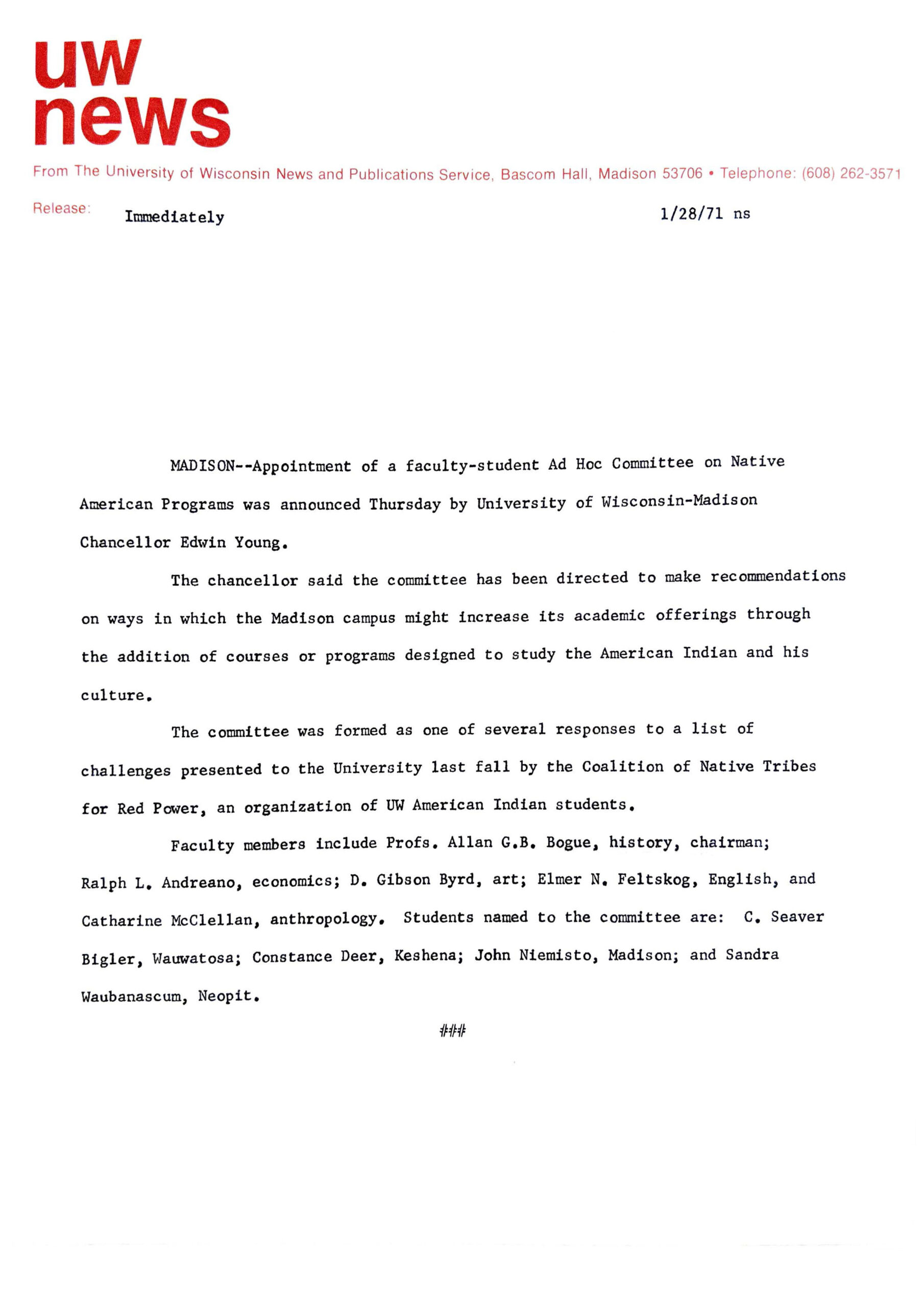
Over the course of the academic year, the Native members of the Committee lobbied for the creation of an academic home for Native studies. They wanted courses that addressed the contemporary problems confronting Native nations in Wisconsin. “By such study the Indian students hope to become more aware of their heritage and to reinforce their cultural identity,” the committee reported. Waubanascum and Niemisto also pushed for tools that might also benefit the efforts of tribal nations as they sought to develop their economic, political, and legal autonomy. “The student members of the committee,” the report noted,” have give[n] highest priority to course[s] in ‘The Law and the American Indian,’ ‘Politics and the Native American,’ and appropriate language offerings.”
In Their Words with Chad Smith
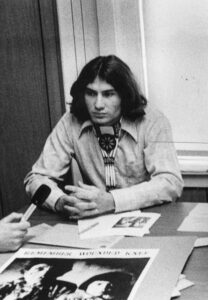 Chad Smith (Cherokee Nation): Native Student Recruiter
Chad Smith (Cherokee Nation): Native Student Recruiter
Chad Smith attended UW as a graduate student in the School of Business from 1973-1975. While at UW, Chad was involved with many aspects of the Native community on campus, an earlier indicator of his strong support of Native peoples and tribal nations. After he left UW, Chad went on to serve his community in many capacities, including his tenure as Principal Chief of the Cherokee Nation from 1999-2012.
When asked about American Indian students on campus, Chad Smith remembers student led activism to create space, “There was a building a few blocks off the main campus. It had been an Indian Center at the time and for budget reasons and for other reasons they [University of Wisconsin] decided to close it. So a bunch of the folks said well, we will occupy it, we will just stay there until they threw us out. So folks took turns staying there and doing activities and living there. The university sort of slow walked to shutting it down. There was sort of an ongoing protest.”
On June 14th, 1971, the Ad Hoc Committee on Native American Programs announced that its work was complete. On June 23rd, a meeting was called to announce the findings. “We recommend that the Chancellor should give highest priority to providing the resources necessary to increase the number of courses available on the Madison campus dealing with Wisconsin and American Indians,” proclaimed the committee. Furthermore, the final report called on the Chancellor to establish a “Native American Programs Advisory Committee” to become a permanent university committee, which would be composed by faculty, students, and a representative from the Great Lakes Inter-Tribal Council. Together, they would be responsible for shaping a curriculum in the College of Letters and Sciences dedicated to Native studies. Ultimately, the committee concluded that once the preliminary work was done, “Native American studies shall be granted the status of a full-fledged academic department.” A press release on July 9th, 1971 proclaimed that the recommendations of the committee had been “endorsed Friday by Dr. Edwin Young, chancellor of the Madison campus of the University of Wisconsin.”
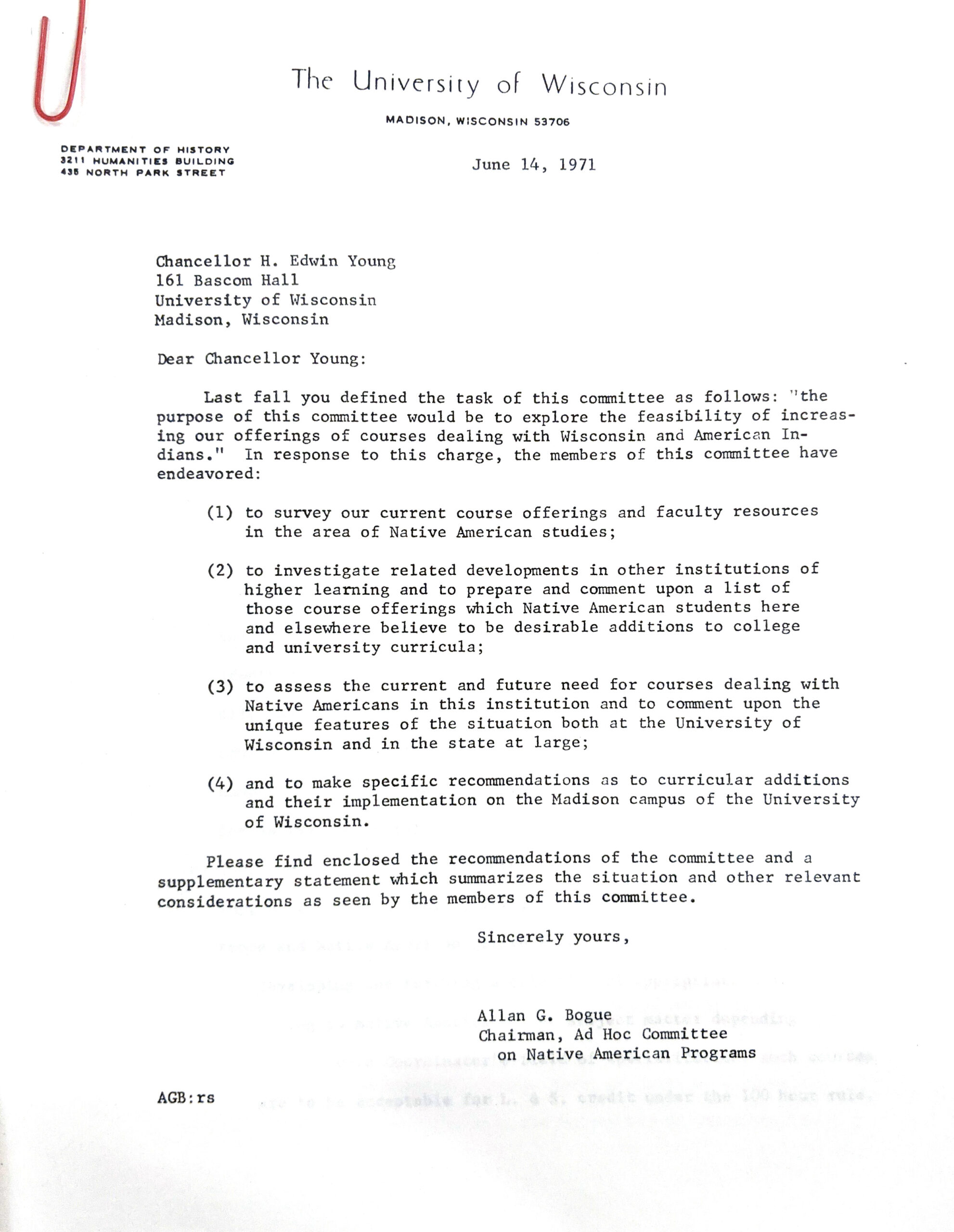
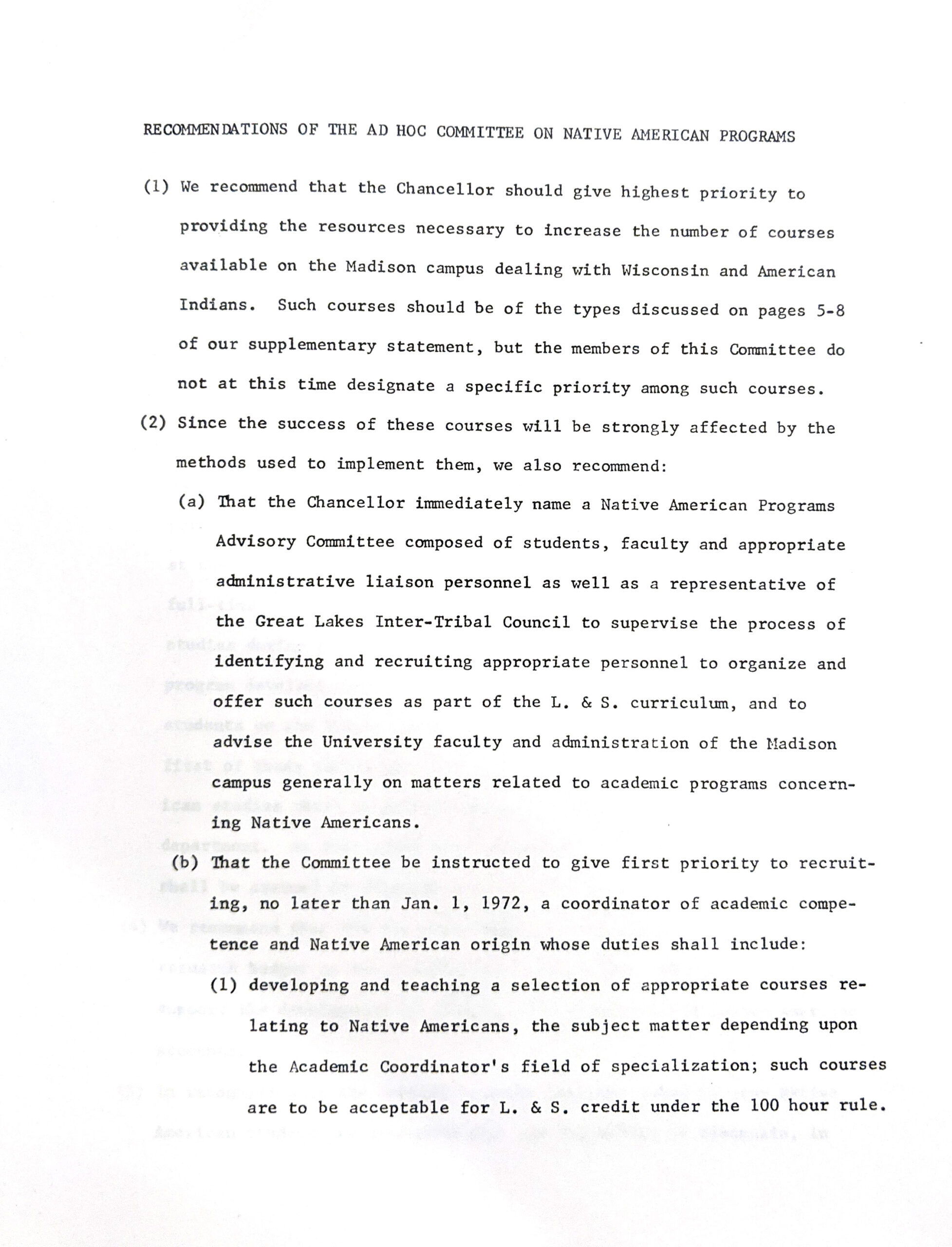
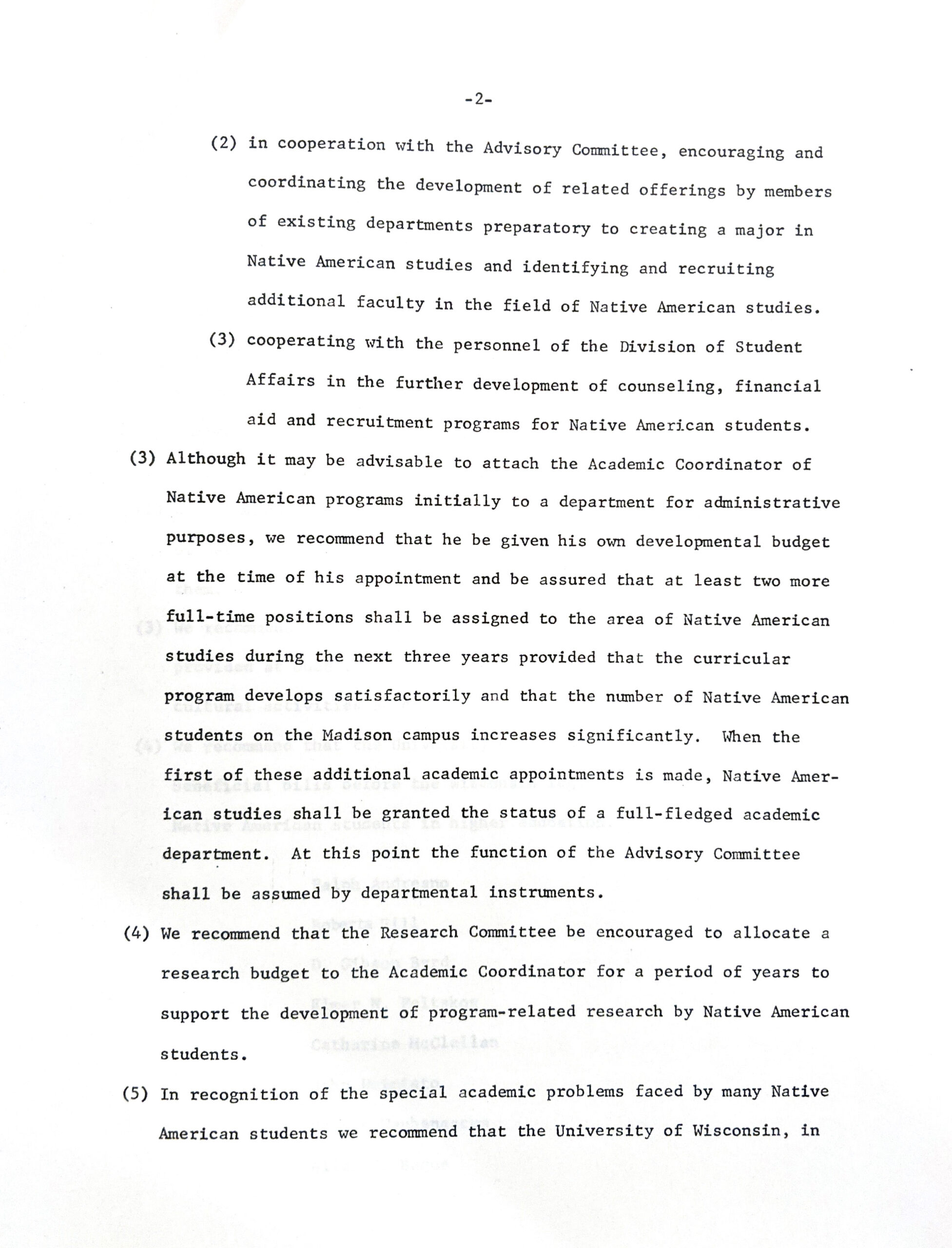
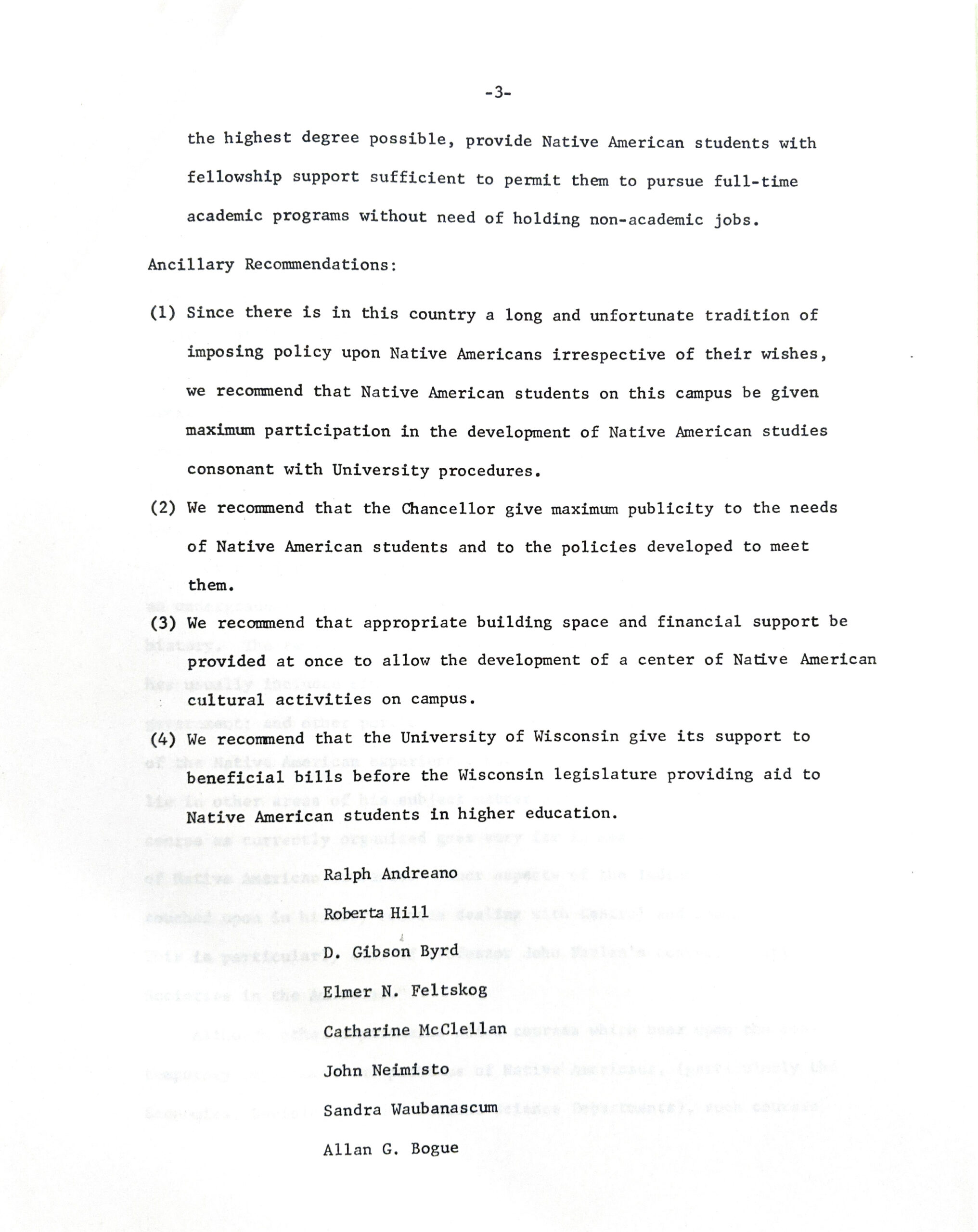
The Ad-Hoc Committee’s final recommendations addressed a number of the CNTRP’s original challenges, with one additional recommendation: the formation of an American Indian Studies Department.
he CNTRP had begun with only a score of Native students and a great ambition. What started as a set of challenges to their university became an official recommendation to form a department of Native American Studies. The proposed department, however, was eventually reorganized as the American Indian Studies Program and was launched in 1973, with John Niemisto as its first director.
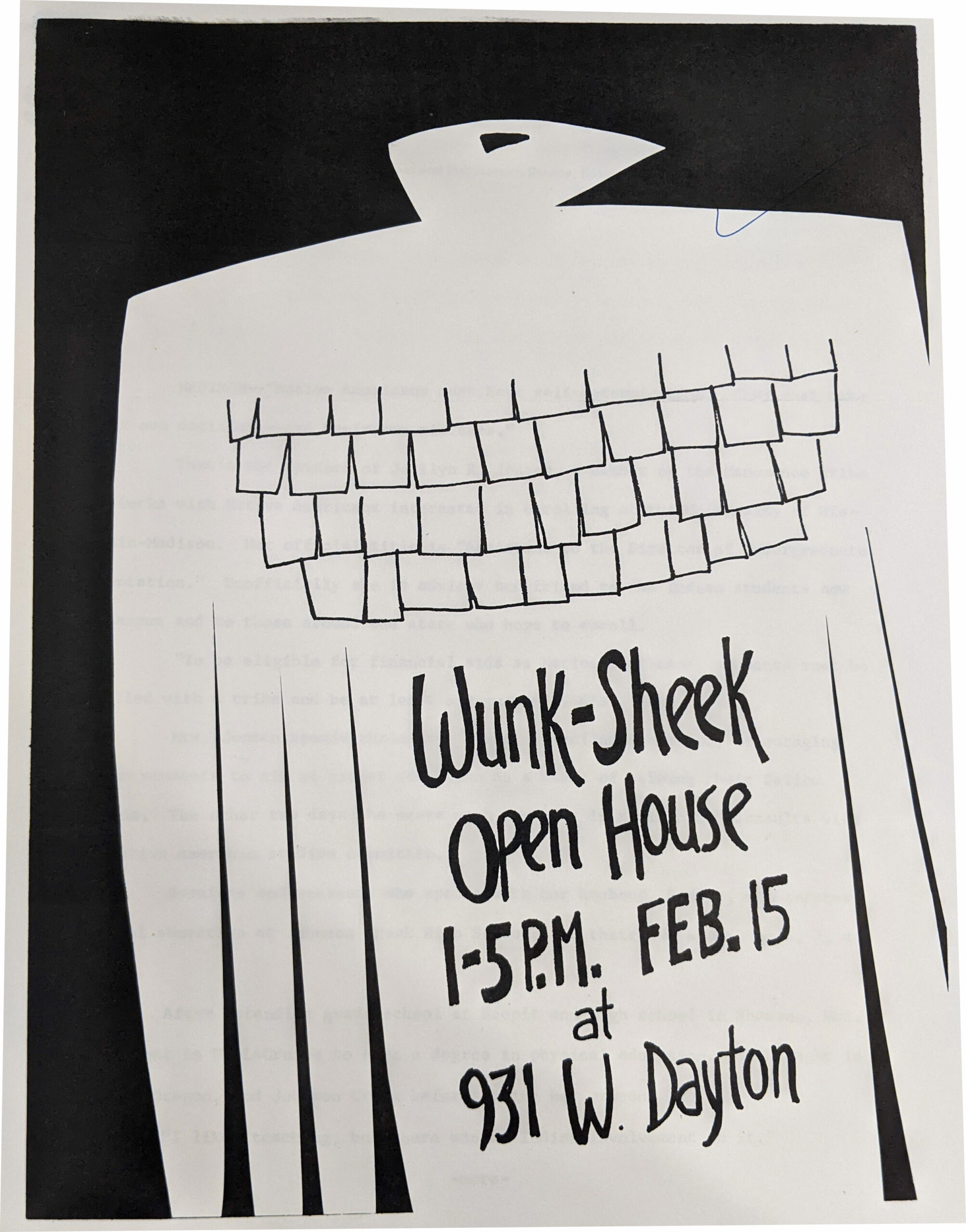
For the first time, courses which focused on contemporary Native nations taught by Native instructors began to be offered to all undergraduates. That same year, the CNTRP evolved into the Wunk Sheek, the official Native undergraduate student organization. Both groups endure fifty years later, and are the proud legacy of the Native students who finally brought American Indian and Indigenous Studies to the University of Wisconsin-Madison.
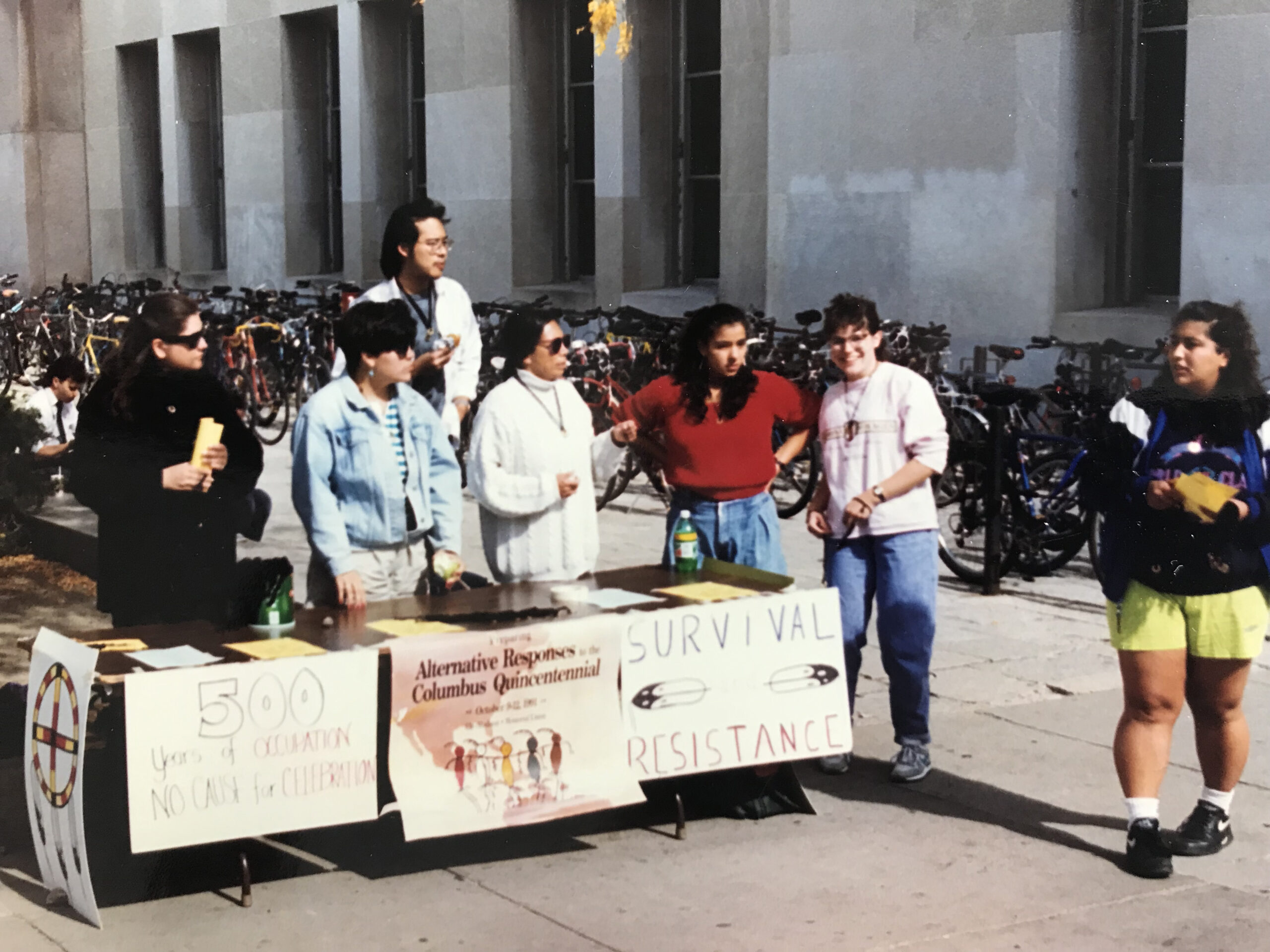
Fall 2022 Event Information
- Monday, October 10th: Celebration of the American Indian Studies 50thAnniversary
- Thursday, October 13th: Indigenous EcoWell Bead Exhibition
- Ongoing: Sifting & Reckoning: UW-Madison’s History of Exclusion and Resistance
- For more, see our CALENDAR OF EVENTS
Learn more about AIS
Lorem ipsum dolor sit amet, consectetur adipiscing elit. Ut elit tellus, luctus nec ullamcorper mattis, pulvinar dapibus leo.
